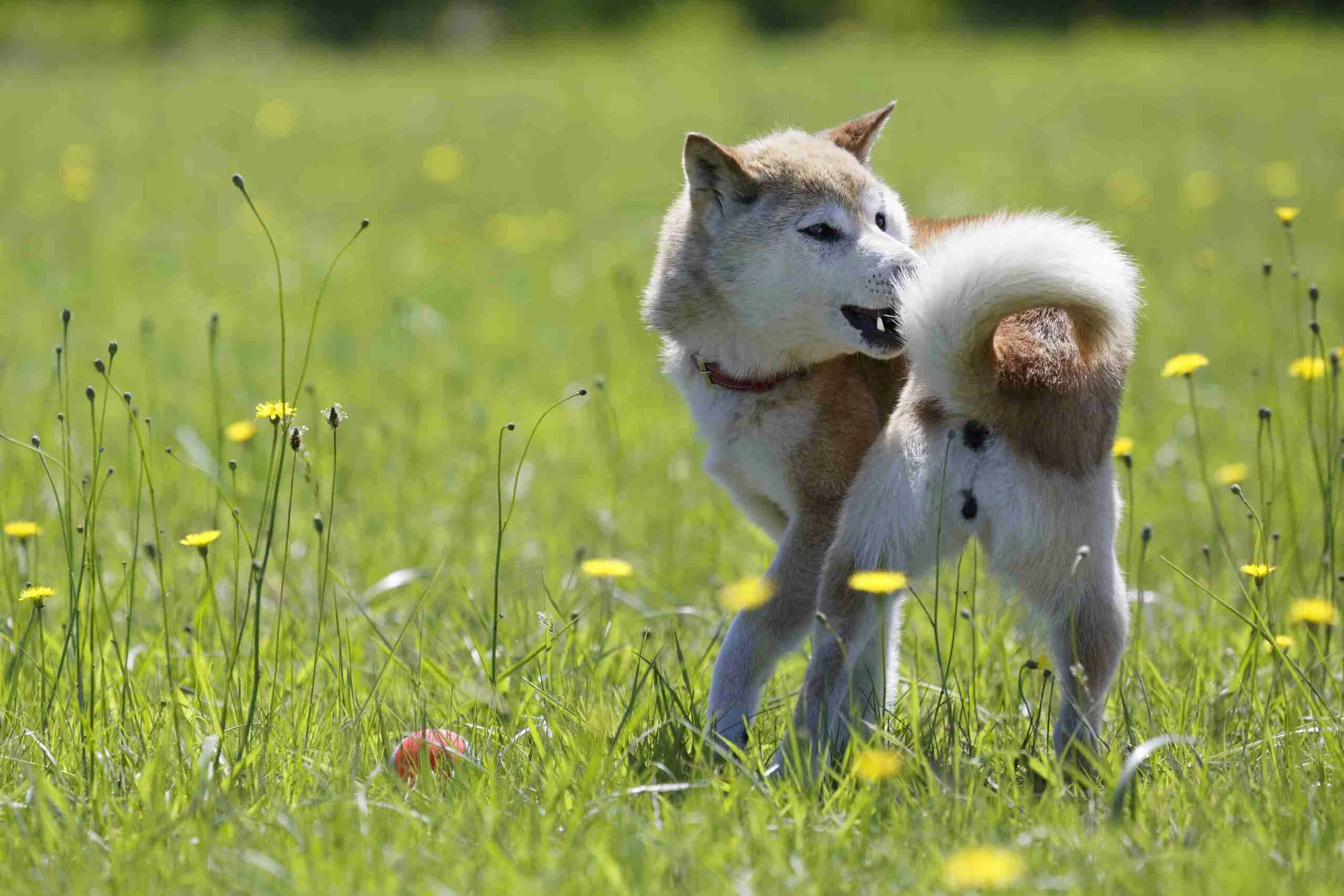Elusive Dog Tails
Why do dogs chase and bite their tail?
It’s funny, puzzling, and sometimes frustrating when your dog catches sight of his tail and spins in circles trying to catch it. Or she bites and chews her tail for no apparent reason.
There are several possible behavioral and/or medical reasons why your dog is chasing or biting his tail. The simplest explanation is boredom. Tail-chasing is a simple way for dogs to let loose and have a little fun. If a dog doesn’t have anything or anyone to play with, he might need to entertain himself. It’s a game- they see their tail wagging behind them and it’s fun to chase. Even dogs without tails might chase their backsides. Tail chasing is normal when it’s brief, easily interrupted, and easily redirected.
Sometimes the chase is successful, and they catch their tail. When dogs bite their tail while playing it can most definitely hurt. However, when they’re having that much fun, the pain may not register fully until later.
Puppies may be more apt to bite and chase their tails because they are just discovering what is going on with their bodies. Although it’s cute and entertaining, it’s not a healthy game to encourage. You should redirect the puppy’s attention to a toy to avoid injury.
Boredom and puppy play are just a couple of possible reasons your dog is chasing and biting his tail. The behavior may be a sign of a medical condition such as a tail injury, impacted anal glands, fleas, ticks, allergies, or worms.
Tail chasing can sometimes develop into a serious compulsive disorder. Warning signs to look out for include not stopping after a few seconds, only chasing in one direction, or biting so hard that his tail bleeds. Tail biting or chasing can become a compulsion in any dog, but especially dogs who have little individualized stimulation. When tail chasing goes from a fun game to a nonstop habit, you may have a compulsive behavior on your hands. If you are concerned with your dog’s behavior, consult a dog trainer, animal behaviorist, or veterinarian.
Nearly all dogs chase their tails now and then but watch out if your pet is doing it every day or if it becomes an obsession. Also, be on the lookout for accompanying behaviors, such as your dog growling at his tail, chewing or biting around his tail, whimpering, or showing other signs of discomfort and pain. In any of these scenarios, schedule a visit with your vet as soon as possible.
Since 1994, the Animal Resource Center and the Shops of Second Chance Humane Society have been dedicated to serving animals in Southwestern Colorado. Our adoption hours are every day from 11 a.m. to 5:30 p.m. We are located at 177 County Rd 10, Ridgway, CO. You can view our shelter pets and services online at secondchancehumane.org.


